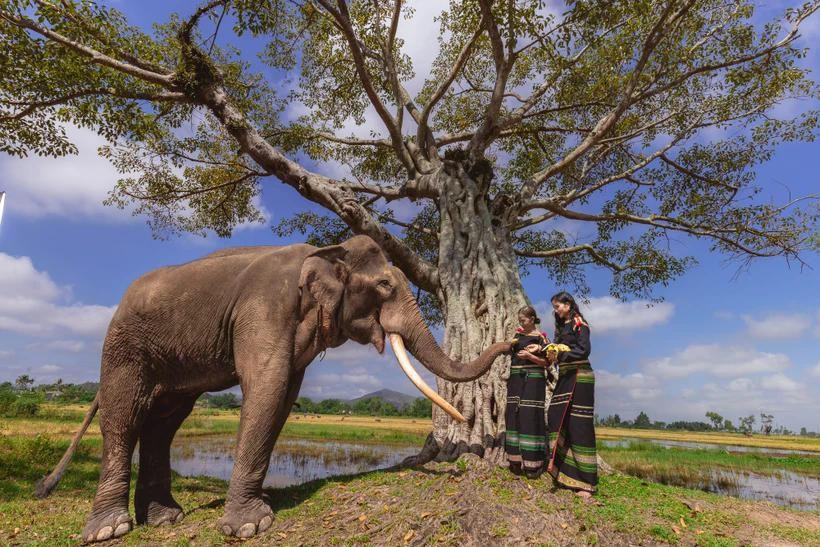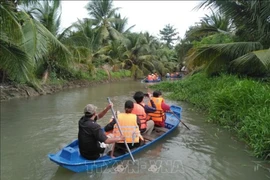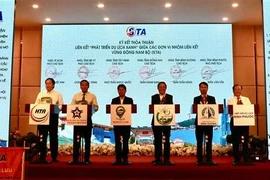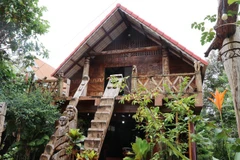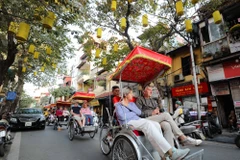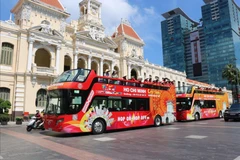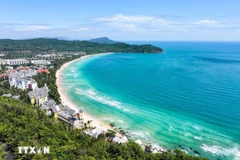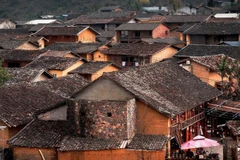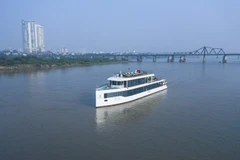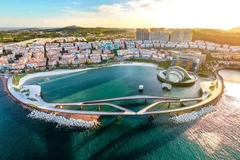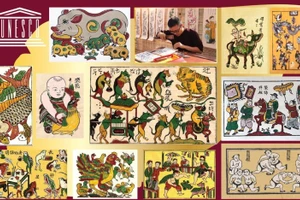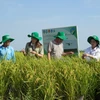Hanoi (VNA) – As awareness of sustainability grows among travellers, even simple acts, like refraining from littering, can create a positive impact and elevate Vietnam’s image as a green and responsible tourism destination.
Plastic waste in tourism may seem like a minor issue, but on the path toward sustainable development, it is not. The environmental repercussions of this pollution menace not only tarnish the image of destinations and diminish national competitiveness but also result in far-reaching and unpredictable consequences.
In this context, Vu Quoc Tri, General Secretary of the Vietnam Tourism Association, talked to the press about the country’s efforts in addressing plastic waste and the road ahead for sustainable tourism.
A challenging but necessary path
- Vietnam has implemented several initiatives to reduce plastic waste at tourism sites. What have been the results so far, and in your view, what step should be taken next to position Vietnam as a green destination on the world tourism map?
Vu Quoc Tri: Between 2023 and 2024, Vietnam received support from the United Nations Development Programme (UNDP) through a small but meaningful pilot project aimed at reducing plastic waste in the tourism sector. The heart of this initiative was about action, about taking tangible steps towards green and sustainable tourism. It's a global story, not just Vietnam’s. The project has been quite successful.
There have been several key outcomes. Firstly, a large set of research documents compiled by us in collaboration with the former institute of environmental strategy under the former Ministry of Natural Resources and Environment, now serves as a vital theoretical foundation.
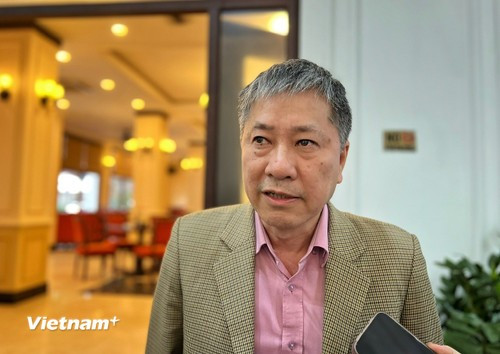
Secondly, a detailed set of criteria for plastic-free tourism businesses outlines highly specific requirements and mechanisms, providing a basis for enterprises to take action.
Thirdly, we have piloted a digital application to manage plastic waste at tourism enterprises. In essence, the most significant achievement lies in building technical capacity and adopting new technology and automation technology to manage plastic waste more efficiently. We have also launched an action plan for plastic waste reduction within the tourism sector, developed by the Vietnam Tourism Association with support from UNDP. This plan aims to meet the government’s broader goals for sustainable tourism development. By 2030, we hope to see concrete and measurable results.
Over the past two years, the project has proven its effectiveness in two locations. First, in Ninh Binh, its Trang An – including the Tam Coc-Bich Dong and Van Long wetland – have genuinely become green destinations, free of plastic waste. Then in Hoi An, thanks to the project’s technical applications, accommodation providers and tourism service businesses in the ancient town have reduced their waste volume by 30 to 35% over just six months.
We view these as extremely positive results and hope to scale up the model nationwide.
- Small and medium tourism businesses often cite high costs as a major obstacle in transitioning to green operations and engaging in the circular economy. In your opinion, what needs to be done to overcome this challenge? What kind of support should the Government provide to help tourism enterprises become greener?
Vu Quoc Tri: This is one of the issues we have discussed extensively under the project. During roundtable sessions and consultations with tourism businesses in pilot areas, it became clear that a key barrier to the green transition and plastic-free tourism is the lack of resources.
As we all know, tourism services rely heavily on disposable materials, many of which are made from plastics. To switch away from those involves a complete overhaul. The initial requirement for such a transition is financial capability, but many tourism businesses currently face financial difficulties. Most of them are micro-, small- or medium-sized, often with only a few staff members. To stay relevant in a competitive market like it is today, investing in greener operations can be overwhelming for them.
Secondly, although some businesses do have the technical know-how, they still face the question of what to replace and how, what the viable alternatives are, and where they can find trustworthy suppliers. These are all very practical concerns that we’ve seen come up time and again.
Third is the matter of policy and management mechanisms at tourist destinations – ones that are fair and reward those making real efforts in green transformation.
Our association does not have the authority to issue regulations or enforce compliance. As a professional social organisation, we operate based on voluntary participation.
Given these challenges, we recommend that State management agencies step in and support the effort. If tourism is recognised as a key sector, it should also be granted policy incentives such as preferential bank loans, tax reductions, or support for training in sustainable management practices.

Recognising green destinations
- Based on the green tourism criteria, which destinations in Vietnam can be classified as “green”?
Vu Quoc Tri: We have found several promising examples, such as Co To, Cu Lao Cham, and Trang An. Beyond that, there are other locations – like Sa Pa, Ha Giang, Bac Giang and more – where green potential is clearly visible. To translate the potential into reality, we are now launching a green destination programme. With the active involvement of local authorities and businesses, we hope to build a full map of sustainable tourism destinations across the country. That map, in itself, will become a valuable tourism resource of Vietnam.

- How can green destinations help elevate the Vietnamese tourism brand?
Vu Quoc Tri: We often say that Vietnamese tourism is enjoying a golden era, with numerous international awards.
But in the broader market context, we must not grow complacent. Our view is this: we should always benchmark ourselves against those ahead of us, not those behind. If we look at the Southeast Asian region alone, Vietnam still lags behind several countries in key areas – be it the number of international arrivals, tourism’s contribution to the national economy, or the preservation and promotion of traditional values.
When we speak of elevating the tourism brand, this is what we mean. Our aspiration is to place Vietnam among the top 30 nations worldwide for tourism development by 2030. We have made meaningful progress, but to truly reach that level, there is still much to do.
One key issue is destination management and carrying capacity. During peak travel seasons, many of our top sites are overloaded. If such images are what circulate internationally, they can deter potential visitors. To address this, the Vietnam Tourism Association is committed to working with the industry to apply technical solutions and promote more professional management across tourism businesses and destinations in the country.
- Thank you./.

